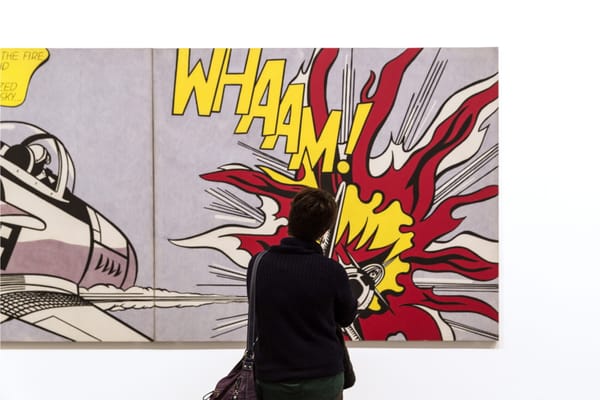Mainland China Beckons: Why Western Galleries Can’t Rely on Hong Kong Alone
Western galleries expanding beyond Hong Kong into Beijing and Shanghai are seizing China’s $15 billion art market—like our art critic Panu Syrjämäki warns, ignoring these emerging mainland collectors could mean fading from half of Asia’s scene.

Collectors in mainland China are no longer content to trek to Hong Kong for every major sale or exhibition. They want art brought directly to them, in Beijing and Shanghai—vast metropolises brimming with potential and shaped by cultural dynamism. At stake is a share of the more than $15 billion Chinese art market, which has shown unstoppable growth even amid political shifts and global economic uncertainty.
For years, Western galleries have relied on Hong Kong’s transparent legal framework, free-port policies, and international cachet, believing it to be the only viable gateway to Asia. That belief is changing. Evolving tastes on the mainland, combined with fresh government support for the arts and a new generation of high-net-worth buyers, have created an atmosphere of urgency that can no longer be ignored.
“Frankly, if you’re only in Hong Kong, you’re about to lose your place in line,” warns Panu Syrjämäki, head editor and art critic at ART Walkway. “Our teams on the ground are tracking a surge of interest in emerging and mid-career Western artists across Beijing and Shanghai, and those cities want a local touch, not a distant outpost.”
The momentum behind these mainland art hubs may seem abrupt, but insiders say it’s been building for years. As the political and economic landscape shifted, top-tier collectors in Beijing and Shanghai grew weary of constant travel; they embraced new local galleries and private museums instead. International houses like Christie’s and Sotheby’s still do billions in Hong Kong, but they increasingly send staff to stage private previews and more intimate engagements in the mainland. Exhibitions that truly resonate require close collaboration with local cultural authorities, a keen sense of censorship boundaries, and an ability to respect the region’s nuanced customs.
“Western dealers have a choice: adapt or remain strangers,” says Syrjämäki. “Opening in Shanghai isn’t like flipping on a neon sign that reads ‘We’re here!’ It’s about forging real relationships. Otherwise, you’ll find yourself blocked by bureaucracy or cultural missteps.”
The challenge is real. Mainland regulations can prove labyrinthine, shipping fees climb with each new license, and approval for certain artworks might vanish on a moment’s notice. Once these obstacles are overcome, the upside is profound. Galleries taking the leap—whether opening a branch in Shanghai or hosting frequent pop-ups in Beijing—are reaping long-term loyalty and bigger, risk-friendly acquisitions. Tastes are evolving quickly, with local buyers developing an appetite for conceptual and offbeat Western works, not just the star-studded household names.
Syrjämäki argues this transition is critical for any gallery seeking to remain a serious player in Asia. “I’ve seen it happen to the best: they skip the mainland, and suddenly they’re irrelevant to half the collectors out here. That gap can become impossible to bridge if you wait too long.”
In the background, Hong Kong’s robust auction scene remains essential—nobody expects it to disappear from the global art map. Rather, the question is whether it’s still sufficient on its own. With new museums and cultural districts rising on the mainland, there’s a sense that deeper engagement could shape the next decade of the art market. Genuine commitment, after all, fosters trust in ways that fleeting fair appearances or sporadic shipments never can.
The final takeaway is straightforward: if you’re a Western gallery aiming to thrive in Asia’s future, it’s time to make your move. Hong Kong still matters, but a serious presence in Beijing or Shanghai could be the difference between leading the conversation and fading from it. As Syrjämäki puts it, “It’s not just about hanging a shingle. It’s about showing you care enough to be where the energy truly is. And right now, a lot of that energy is on the mainland.”
Time, it seems, is running out for those still on the fence. And in a market known for decisive leaps and swift transformations, hesitation is the quickest path to being left behind.
ART Walkway News






